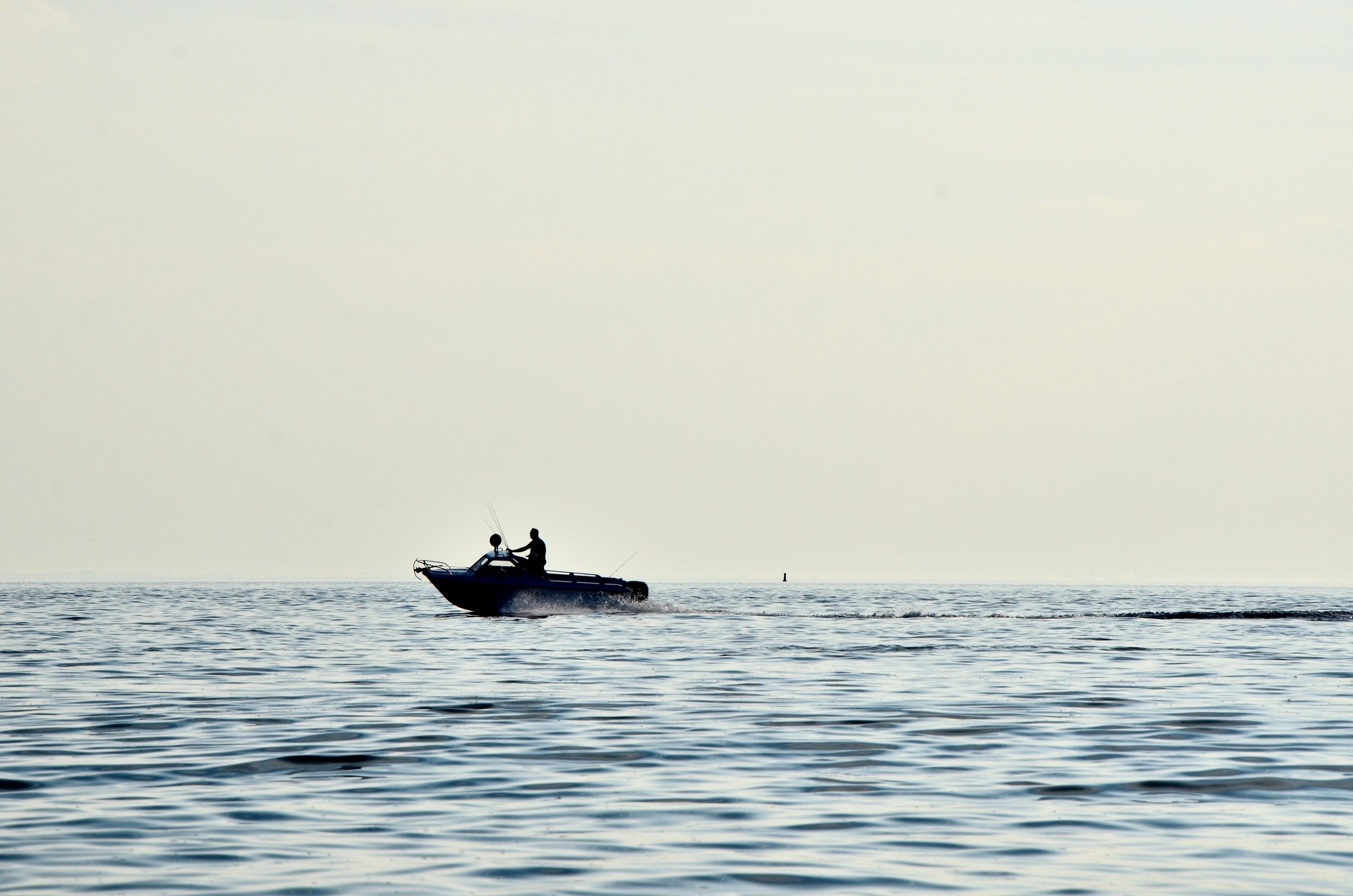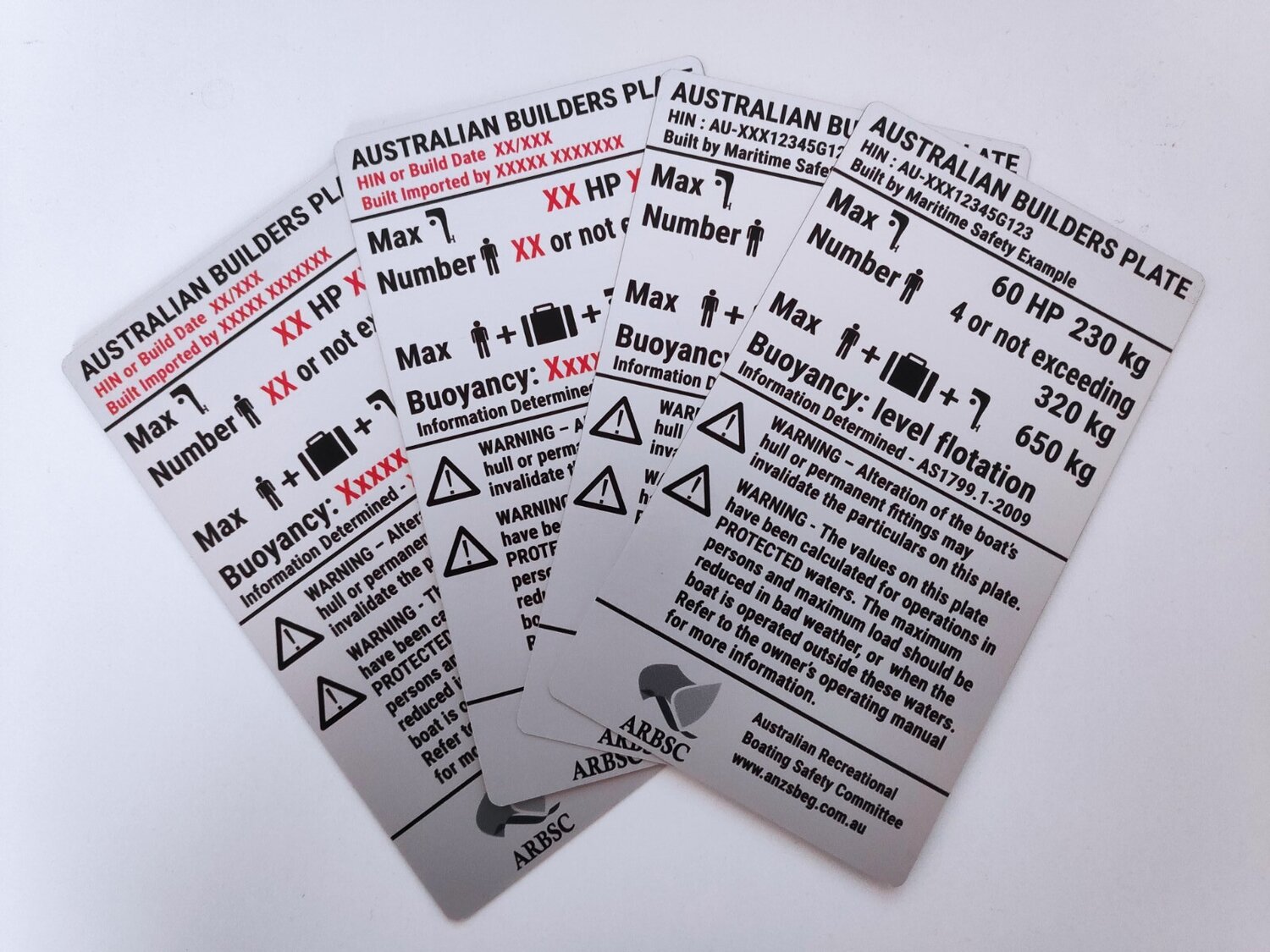
Australian Builders Plate -
Information for boaters
The Australian Builders Plate system was established in 2005 with the support of Australian boat builders and governments, to enhance the safety of recreational boats.
What is an Australian Builders Plate (ABP)?
The ABP is an information plate attached to most new powered recreational boats, including imported boats.
The ABP provides essential information to a boat’s operator regarding the safe operation of a boat. It includes information such as the boats maximum loading capacity, maximum engine power and the flotation performance of the boat in the case of an emergency.
ABP information must be determined by a competent person (typically the boat manufacturer) in compliance with relevant national or international technical standards.
The fitting of ABPs to applicable boats is a legal requirement in all Australian states and the Northern Territory.
Where do I look for a boat’s ABP?
Boats which are required to have an Australian Builders Plate must display the plate in a prominent location, that’s readily visible to the operator of the boat when they’re getting underway. This will typically be in the cockpit, or near the primary seating position.

Interpreting the information on an ABP
Maximum persons capacity
The maximum persons capacity is the recommended number of persons a boat can safely carry, based on mass, when operated within designated parameters (eg. protected waters and calm weather, or otherwise specified).
Boaters should never exceed the maximum kilogram mass of persons listed on an ABP. Exceeding the maximum loading capacity increases the risk of a boat sinking, swamping or capsizing. Furthermore, a boat may not be fitted with sufficient buoyancy to support masses exceeding its maximum loading capacity when submerged.
States may require boaters to comply with the person capacity listed on an ABP (with or without modification). Check with your local marine safety agency to confirm the regulations in your state or territory.
Buoyancy / Flotation
Recreational power boats measuring less than 6 metres in length must be fitted with either ‘basic’ or ‘level’ flotation. When shopping for a boat measuring less than 6 metres in length, the ARBSC encourages prospective boat purchasers to preference boats fitted with level flotation due to its preferable safety performance.
Basic flotation ensures that a boat is fitted with enough flotation to keep the vessel floating in some form (typically upturned and largely submerged) in the case of swamping or capsize. In this circumstance, the occupants will be partially submerged in the water, clinging to an upturned hull and risk becoming hypothermic or being exposed to other risks, such as hazardous marine life.
Level flotation ensures that a boat is fitted with adequate and well-located flotation, meaning the vessel should float level with the waterline, providing a safer place of refuge in the case of swamping or capsize. If the vessel becomes swamped or flooded, it’s less likely to capsize.
Level flotation provides the best chance that occupants will not be submerged in water. It allows easier access to safety equipment and a greater opportunity for self-rescue by bailing water from the boat.
Whether floating upright or upside down, level flotation ensures a larger target to be spotted by rescuers and a larger space for refuge than basic flotation.

Further Information
For more information regarding the ABP Standard system and a breakdown of the information listed on an ABP, please refer to the ‘general public’ FAQs:
PDF Documents:
Accessible Word Document:



